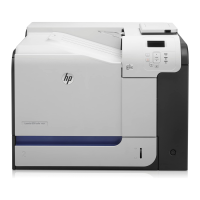FUP Commands
File Utility Program (FUP) Reference Manual—523323-014
2-52
COPY: Copy Form Guidelines
A COBOL program can read multireel tape files created by FUP COPY.
FUP COPY uses sequential block buffering when accessing in-filename. All
record locks are ignored.
When you enter a COPY command with no options, FUP opens in-filename
with the read-only access, protected exclusion mode, unless in-filename is a
terminal. If in-filename is a terminal, FUP opens it with shared exclusion mode.
If you include the SHARE option in the command (and in-filename is a disk
file), in-filename is opened with the shared exclusion mode.
FUP opens out-filename with the exclusive exclusion mode unless
out-filename is a terminal.
A physical read of in-filename reads one logical record. A logical record is 132
bytes for unstructured files or files in the EDIT file format. A logical record is the
length you specify for structured disk files and nondisk devices.
A physical write to out-filename writes one logical record. The actual number of
bytes written is the number of bytes read.
Although you can specify a block size of as many as 32,767 bytes for the
BLOCKIN and BLOCKOUT options, some peripheral devices have smaller
maximum block sizes that must not be exceeded when you use the COPY
command.
If you copy a file that contains data records and zero-length records (empty
records) to a relative output file, all the records are written, including the zero-
length records, unless the input file is also a relative file.
If the input file is a relative file, the zero-length records are skipped unless you
specify NO COMPACT. To transfer zero-length records from a relative file, include
NO COMPACT in the COPY command.
For example, when you copy a relative file containing a combination of eight data
records and two zero-length records, the record count of the output file is eight
records instead of ten. So you lose zero-length records if you copy data with zero-
length records in and out of a relative file.
Note. For more information, see these manuals:
COBOL85 for NonStop(TM) Himalaya Systems Manual (D-series RVUs)
COBOL85 for NonStop Systems Manual (G-series RVUs)
COBOL Manual for TNS/E Programs (H-series RVUs)
COBOL Manual for TNS and TNS/R Programs (H-Series RVUs)
Note. For more information, see the Enscribe Programmer’s Guide.
